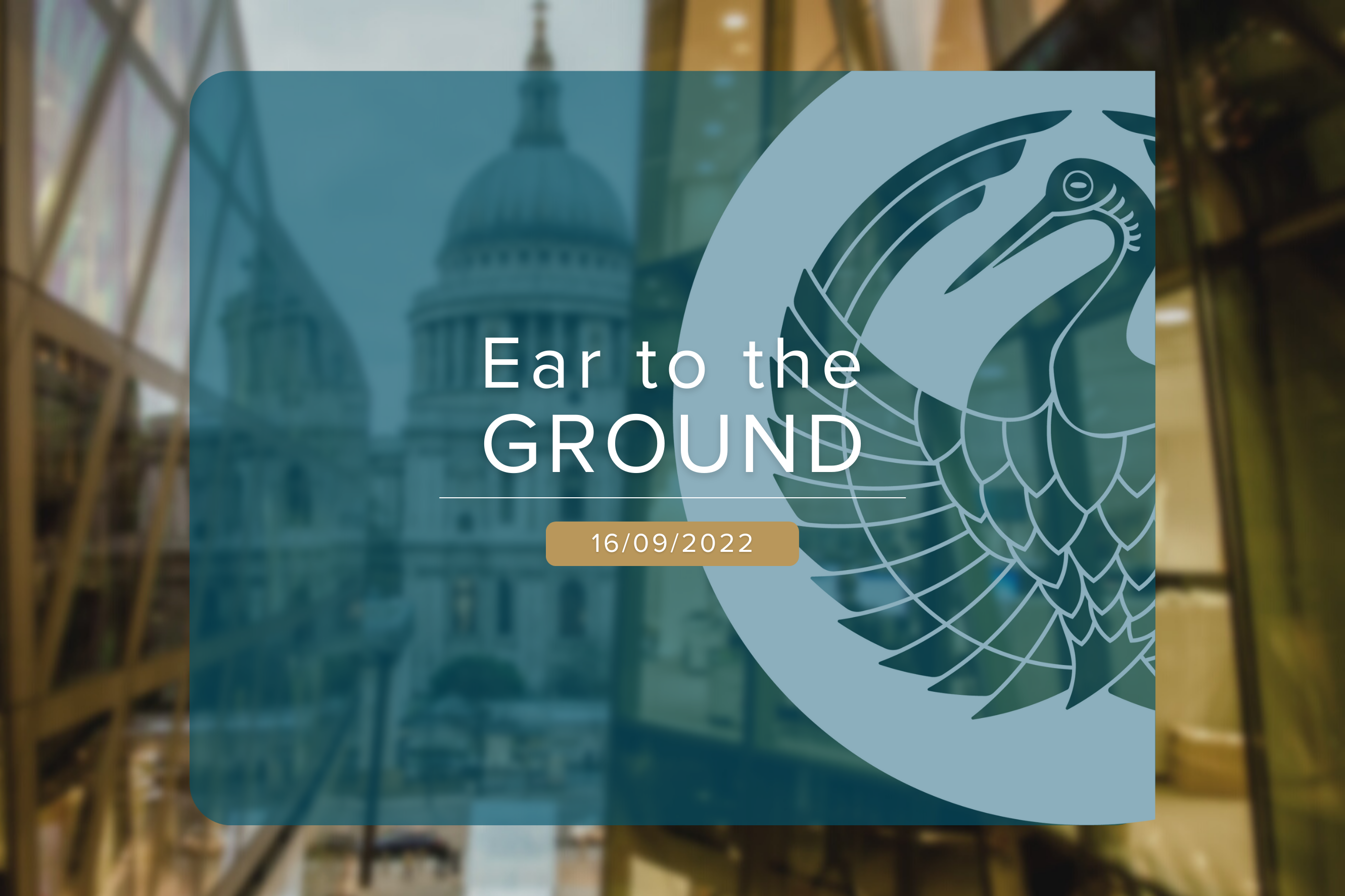Ear to the ground
16 September 2022

It is difficult to not sound like a broken record at the moment but we are currently within an environment which is very data sensitive, driving which way markets move next, at least in the short term. The case in point was made this week in the US. Inflation had been expected to come in at 8.1% year on year to August, but instead posted a reading of 8.3%. Markets did not take to this kindly, with the S&P 500 closing down 4.33% on the day.
The higher than expected print leaves the market fully expectant that the next interest rate hike will be 0.75%, with some even touting a full 1% move. Core inflation also surprised to the upside, coming in at 6.3% against a consensus of 6.1%. A key driver behind inflation was food, where prices are now rising at a rate not seen since the 1970’s.
Higher interest expectations means that the US Treasury yield curve is now well and truly inverted. At the time of writing the 2 year yield stands at 3.89%, with the 10 year standing at 3.44%. As we have commented on before, a negative differential has been a pretty good indicator that a recession is coming, it is just the timing. Although we have already seen two consecutive quarters of negative growth in the US, which technically represents a recession, the authorities are yet to declare it one, resorting to reasons such as the strong market. Time will tell if they change their mind and backdate a potential start date. It is not just in the US where we see the yield curve inverted. In Europe the 30 year 5 year overnight index swap yield curve is in the same position, something not seen since 2008.
We perhaps also got a little insight at the corporate level as to views regarding recession. This week we saw the CEO of FedEx, the delivery company, announce that he expects the economy to enter a worldwide recession. The company has historically been seen as a leading indicator for world trade and with the company’s activity falling, world trade is expected to sink in the coming months. The company blamed weakening global shipment volumes for their weaker than expected results.
In the UK meanwhile we saw inflation come out a little weaker compared to the previous reading and consensus forecast, with CPI for August at 9.9% versus 10.1% and 10.2%. The drop in petrol costs was cited as the reason. The unemployment rate was also better than expected, at 3.6% against a consensus forecast of 3.8%. This was driven however by a rise in the so called inactivity rate, i.e. people no longer looking for work, driven by an increase in an increase in the number of students and long term sick.
Perhaps something to watch in terms of future corporate profitability was producer price input costs, which rose 20.5% year on year. Producer price output prices however, also known as factory gate prices, only rose 16.1% for the same period to August. Are companies therefore absorbing this difference? Will corporate profitability take a hit, or are they planning to reduce costs somewhere else?
This article is for information purposes only and should not be construed as advice. We strongly suggest you seek independent financial advice prior to taking any course of action.
The value of this investment can fall as well as rise and investors may get back less than they originally invested. Past performance is not necessarily a guide to future performance.
The Fund is suitable for investors who are seeking to achieve long term capital growth.
The tax treatment of investments depends on the individual circumstances of each client and may be subject to change in the future. The above is in relation to a UK domiciled investor only and would be different for those domiciled outside the UK. We strongly suggest you seek independent tax advice prior to taking any course of action.
Subscribe Today
To receive exclusive fund notifications straight into your inbox, please complete this form.